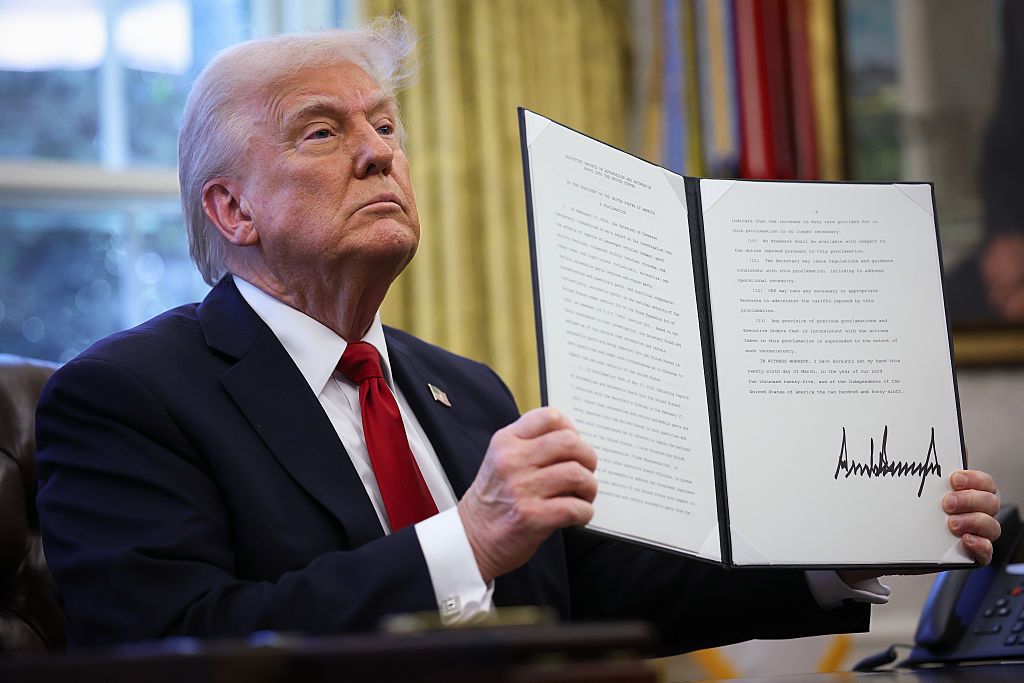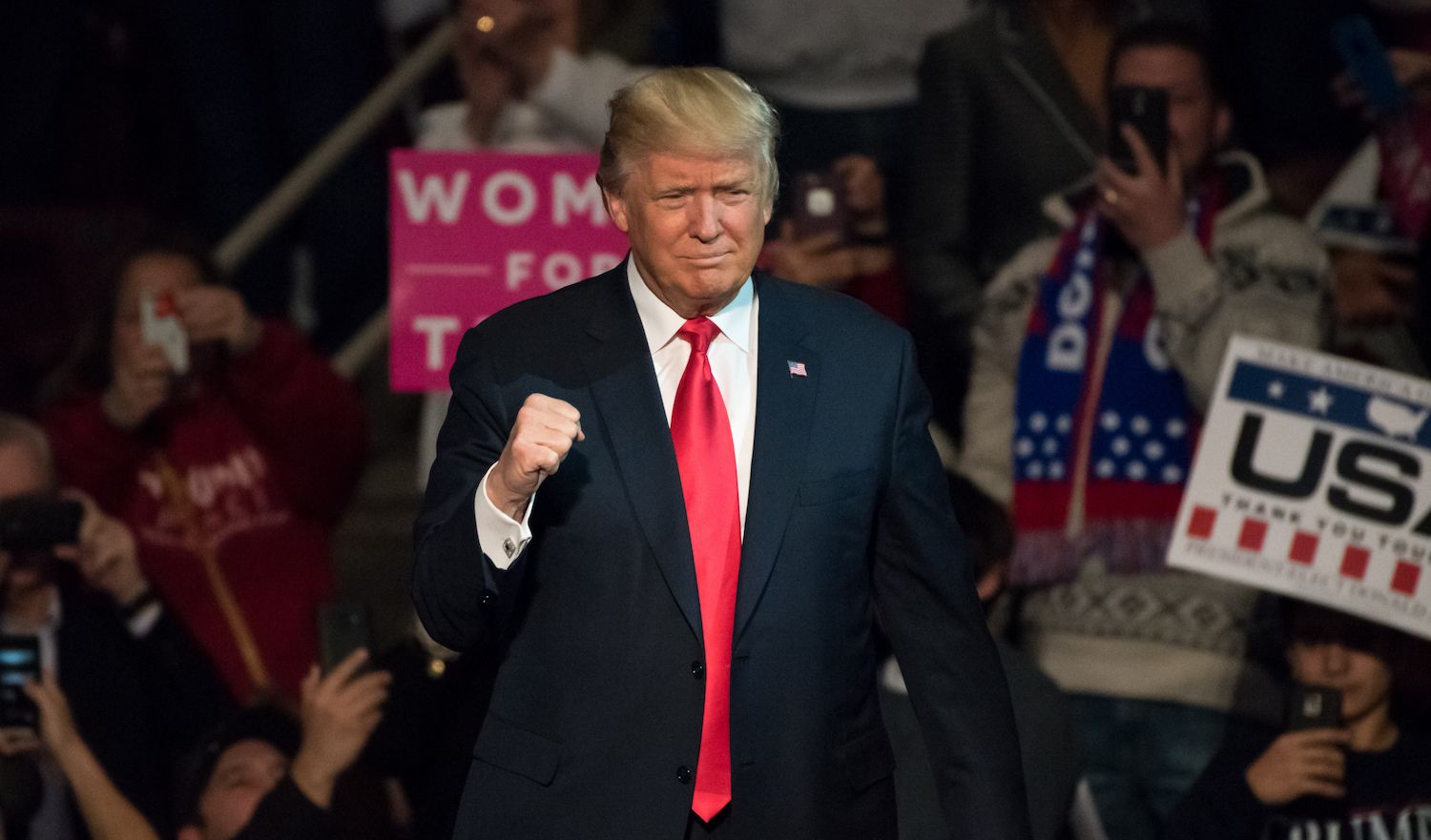Markets
Bitcoin’s Decline: How It Stacks Up Against Past Market Corrections
Published
1 month agoon
By
admin

Bitcoin fell below $80,000 late Thursday evening, extending its decline to 27% from its all-time high of $109,000 reached in January.
The largest crypto by market value has now dropped beneath its 200-day moving average, a key technical indicator often watched by traders to assess long-term trend strength.
The decline follows accelerating outflows from Bitcoin ETFs, which had fueled much of the rally to record highs.
Over the month of February, investors have pulled more than $2 billion from spot Bitcoin ETFs, the most significant weekly outflows since their inception.
Meanwhile, gold ETFs have seen inflows rise, suggesting investors are shifting toward traditional safe-haven assets amid broader macroeconomic uncertainty.
Still, the latest drawdown is relatively mild compared to past Bitcoin cycles.
Historical data shows Bitcoin has experienced at least 16 significant corrections from all-time highs, with declines ranging from 30% to 85% before eventually recovering.
The current downturn mirrors a similar 33% drop between March and August 2024, which took 144 days to reach a new high in November.
More severe declines, such as the 78% plunge in 2021-2022 and the 84% drop in 2018, took significantly longer to recover, with multi-year timelines before fresh highs were reached.
Macro Pressures and Market Shifts
The pullback comes as traders reassess expectations for Federal Reserve interest rate cuts, with persistent inflation data reducing the likelihood of imminent easing.
Higher rates typically weigh on risk assets, including Bitcoin, which rallied in late 2024 partly on expectations of a looser monetary environment.
Market jitters have been compounded by geopolitical tensions following the Trump administration’s decision to impose tariffs on China, Mexico, and Canada, which has pressured global financial markets.
A stronger U.S. dollar and declining Treasury yields have all but added further headwinds to Bitcoin’s momentum.
Building on negative sentiment, a more than $1.4 billion security breach on the Bybit exchange last week—the most significant crypto theft in history—has raised concerns about digital asset security, with some analysts linking the event to increased selling pressure.
Despite the correction, Bitcoin’s long-term holders appear to be staying put.
On-chain data indicates that most selling pressure is coming from newer investors, while wallets holding Bitcoin for extended periods remain relatively inactive.
Even still, Bitcoin’s next move remains uncertain. Historically, corrections of this size have taken anywhere from weeks to over a year to recover, depending on macro conditions and market sentiment.
Traders are now closely watching support levels around $75,000 and ETF flows for signs of renewed demand, analysts have told Decrypt.
Daily Debrief Newsletter
Start every day with the top news stories right now, plus original features, a podcast, videos and more.
Source link
You may like


XRP Price Reversal Toward $3.5 In The Works With Short And Long-Term Targets Revealed


Former New York governor advised OKX over $505M federal probe: Report


First Digital USD (FDUSD) Depegs After Justin Sun Alleges Firm Is ‘Insolvent’ and Not Fulfilling Redemptions


Gen Z’s Bitcoin Bet, The Largest Wealth Transfer In History?


Trump’s Crypto Conflicts Dominate Stablecoin Legislation Debate


First Digital denies allegations, threatens legal action
Markets
Why Trump’s Tariffs Could Actually be Good for Bitcoin
Published
23 hours agoon
April 2, 2025By
admin

So far, crypto markets haven’t behaved as expected under the Trump Administration. Investors hoped that regulatory reform and policies like a Bitcoin Strategic Reserve would drive prices appreciably higher. But it’s been the opposite. Bitcoin has fallen from highs well above $100,000 at the beginning of the year to a trough in the mid-80,000s for most of March.
Crypto prices have suffered from being increasingly correlated with traditional assets like stocks and bonds, which have been hit by macroeconomic uncertainty. Tariffs — surcharges the U.S. places on imports from other countries — have Wall Street worried about a global recession. Crypto investors have been steering clear of crypto assets, which are seen as relatively risky.
“This is all about markets’ ‘risk appetite’ which continues to deteriorate, and for the time being drives a wedge between crypto assets and gold, which continues to be the ‘safe haven’ of choice,” said Marc Ostwald, Chief Economist & Global Strategist at ADM Investor Services International.
“[That’s] in no small part driven by central bank FX reserve managers, who are seeking to reduce USD exposure, which has long been a source of concern to them.”
As the global financial and trade system becomes more fragmented, investors are seeking alternatives to riskier assets, including dollars. For now, that means turning to gold, which is up 18% year-to-date.
But that could change, said Omid Malekan, an adjunct professor at Columbia Business School and author of “The Story of the Blockchain: A Beginner’s Guide to the Technology That Nobody Understands.” Bitcoin could be the new gold soon enough.
“I think the entire [future] is uncertain and in some ways unknowable, because there are many crosscurrents and both crypto and tariffs are new. Some people argue that crypto is just a risk-on tech asset and would sell off due to tariffs. But bitcoin has found footing in some circles as ‘digital gold’ and the physical variety is soaring on the tariff news. So which will it be?”
In other words, economic uncertainty could lead investors to seek out bitcoin just as they have sought out gold in recent months.
Another note of positivity: the impact of tariffs on crypto could be “priced in” and the worst might be over already, said Zach Pandl, head of research at Grayscale, a leading crypto asset management firm.
President Trump is due to announce U.S. tariffs on Wednesday, April 2, at 4 p.m. ET—what’s known as “Liberation Day.” According to reports, he’ll lay out “reciprocal tariffs” against 15 countries that have levied tariffs against the U.S., including China, Canada and Mexico.
Pandl estimates tariffs have so far taken 2% off economic growth this year. But Liberation Day might actually stop the worst of the pain felt in financial markets. “If we see an announcement [on Wednesday] that is tough but phased, and focused on the 15 countries they seem to be targeting, my expectation is that markets will rally on that news,” Pandl told CoinDesk.
“Potentially once we get through this announcement, crypto markets can focus back on the fundamentals which are very positive.”
Pandl said announcements like Circle’s IPO wouldn’t be happening if institutions didn’t have a high degree of confidence in the digital assets sector and the policies around it.
Moreover, Pandl, a former macro-economist at Goldman Sachs, believes that tariffs will increase the appetite for currencies that aren’t dollars.
“I think tariffs will weaken the dominant role of the dollar and create space for competitors including bitcoin. Prices have gone down in the short run. But the first few months of the Trump Administration have raised my conviction in the longer term for bitcoin as a global monetary asset.”
Pendl still believes that bitcoin will hit new all-time highs this year, despite current pessimism around prices. “I wouldn’t have quit my Wall Street job if I didn’t think bitcoin will be the winner in the long term,” he said.
Source link
Bitcoin
Bitcoin Price (BTC) Rises Ahead of President Trump Tariff Announcement
Published
1 day agoon
April 1, 2025By
admin

Recently very shaky risk assets — crypto among them — are attempting a rally on Tuesday, perhaps. buoyed by chatter that Donald Trump’s tariffs won’t be as stringent as feared.
In early afternoon U.S. action, bitcoin (BTC) had climbed to just above $85,000, ahead 2.1% over the past 24 hours. Previously really roughed up crypto majors like ether (ETH), dogecoin (DOGE) and cardano (ADA) had put in gains of roughly twice that amount.
Crypto stocks are also performing well, with bitcoin miners Core Scientific (CORZ) and CleanSpark (CLSK) jumping almost 10% on the day. Strategy (MSTR) is up 5.4% and Coinbase (COIN) 2.1%.
U.S. stocks reversed early session losses to turn higher as well, with the Nasdaq now ahead just shy of 1% for the day.
The action comes ahead of the Trump administration’s so-called “Liberation Day” tariff rollout set for tomorrow after the close of U.S. trading.
Hope?
A report from NBC News suggested the market’s most feared option — blanket 20% tariffs across the board — is “less likely” to be the direction taken by the White House. Instead, according to the report, a “tiered system” of different rates or country-by-country rates could be announced.
Also maybe helping is what appears to be the first acknowledgement that the administration is aware of the market tumult resulting from all the tariff chatter. Speaking today at her daily briefing, White House Press Secretary Karoline Leavitt said that there were legitimate concerns about market swings.
Meanwhile, Israel’s Minister of Finance Bezalel Smotrich announced on Tuesday that a process had been launched to get rid of tariffs on U.S. imports in that country.
Source link
Dogecoin
Dogecoin, Cardano Lead Gains as Crypto Majors Rally
Published
2 days agoon
April 1, 2025By
admin

Six of the top eight cryptocurrencies by market cap have seen modest gains Tuesday morning, with crypto majors led by Dogecoin and Cardano (ADA) notching gains of up to 5.2% and 5.9% each.
Data on CoinGecko also shows green over the past 24 hours across Bitcoin, Ethereum, BNB, and Solana. Charts show Bitcoin gaining 2.5%, Ethereum up 3.7%, with BNB and Solana up 2.5% and 3.3% respectively.
Notably, some $1 million in bearish Bitcoin options, with 1,180 contracts for $70K put options, was sighted Monday evening. Those options expire by April 25.
Ethereum, meanwhile, showed renewed momentum as it outpaced Solana for decentralized exchange volumes, with $63.02 billion over the latter’s $51.25 billion. Despite this, data from DefiLlama shows that Solana is catching up, with a 32% uptick over the week against Ethereum’s 14%.
Still, Dune data shows that Solana-based meme coin volume has dropped to just below $100 million from up to $390 million in January.
“Renewed optimism”
Those modest gains show “renewed optimism for the new quarter,” driven by “a market rebound as Trump’s tariff concerns have been fully absorbed,” Dominick John, an analyst at Kronos Research, told Decrypt.
Users on MYRIAD, the decentralized prediction market launched by Decrypt‘s parent company DASTAN, mirrored that sentiment. Those predicting a Crypto Fear and Greed Index score of below 32 by April 4, indicating Fear, dropped sharply from highs of over 37% at the weekend to around 17% by Tuesday morning, with the greater number of users now expecting a score of between 40 and 44.
John noted that the single-digit gains from the other majors are “riding the overall bullish momentum.” If no “fresh tariff developments or macroeconomic shocks” show up within the week, such a trend could persist.
The broad-based rally, while modest, comes after Bitcoin, Ethereum, and tech equities indexed in the S&P 500 “logged their worst quarterly performance in three years,” according to research from QCP Capital.
This meant a “sobering start to Q2” over a market that is “still searching” for its bullish momentum, QCP Capital wrote. Some risk over a “broad and aggressive regime” may also “deepen recession fears,” QCP noted.
Broader macroeconomic factors, such as President Donald Trump’s announcement of reciprocal tariffs, are expected to draw persisting volatility by Wednesday, followed by the release of the jobless claims report on Thursday.
These numbers could trigger a broader risk-off response that would drive crypto markets alongside risk assets.
Daily Debrief Newsletter
Start every day with the top news stories right now, plus original features, a podcast, videos and more.
Source link

XRP Price Reversal Toward $3.5 In The Works With Short And Long-Term Targets Revealed

Former New York governor advised OKX over $505M federal probe: Report

First Digital USD (FDUSD) Depegs After Justin Sun Alleges Firm Is ‘Insolvent’ and Not Fulfilling Redemptions

Gen Z’s Bitcoin Bet, The Largest Wealth Transfer In History?

Trump’s Crypto Conflicts Dominate Stablecoin Legislation Debate

First Digital denies allegations, threatens legal action

Crypto Firm Galaxy Secures UK FCA Approval for License to Expand Derivatives Trading

Why Is The Bitcoin Price Surging Today?

Cardano Founder Reveals What Will Onboard 3 Billion New Users Into Crypto

Sentient open-source AI search outperforms GPT-4o and Perplexity

Memecoin Collapse Creates Perfect Moment for TradFi To Launch ‘Trusted Assets,’ According to Chris Burniske

Breez Announces Launch Of New Wallet, Misty Breez

Alabama, Minnesota Advance Bitcoin Reserve Plans With Companion Bills

Bitfarms secures $300m loan to fuel AI and data center growth

Crypto Hackers Stole $1.67B in Q1, a 300% Rise From Previous Quarter: CertiK

Arthur Hayes, Murad’s Prediction For Meme Coins, AI & DeFi Coins For 2025

Expert Sees Bitcoin Dipping To $50K While Bullish Signs Persist

Aptos Leverages Chainlink To Enhance Scalability and Data Access

Bitcoin Could Rally to $80,000 on the Eve of US Elections

Sonic Now ‘Golden Standard’ of Layer-2s After Scaling Transactions to 16,000+ per Second, Says Andre Cronje

Crypto’s Big Trump Gamble Is Risky

Institutional Investors Go All In on Crypto as 57% Plan to Boost Allocations as Bull Run Heats Up, Sygnum Survey Reveals

Ripple-SEC Case Ends, But These 3 Rivals Could Jump 500x

Has The Bitcoin Price Already Peaked?

A16z-backed Espresso announces mainnet launch of core product

Xmas Altcoin Rally Insights by BNM Agent I

Blockchain groups challenge new broker reporting rule

The Future of Bitcoin: Scaling, Institutional Adoption, and Strategic Reserves with Rich Rines

Trump’s Coin Is About As Revolutionary As OneCoin

Is $200,000 a Realistic Bitcoin Price Target for This Cycle?
Trending

 24/7 Cryptocurrency News5 months ago
24/7 Cryptocurrency News5 months agoArthur Hayes, Murad’s Prediction For Meme Coins, AI & DeFi Coins For 2025

 Bitcoin3 months ago
Bitcoin3 months agoExpert Sees Bitcoin Dipping To $50K While Bullish Signs Persist

 24/7 Cryptocurrency News3 months ago
24/7 Cryptocurrency News3 months agoAptos Leverages Chainlink To Enhance Scalability and Data Access

 Bitcoin5 months ago
Bitcoin5 months agoBitcoin Could Rally to $80,000 on the Eve of US Elections

 Altcoins2 months ago
Altcoins2 months agoSonic Now ‘Golden Standard’ of Layer-2s After Scaling Transactions to 16,000+ per Second, Says Andre Cronje

 Opinion5 months ago
Opinion5 months agoCrypto’s Big Trump Gamble Is Risky

 Bitcoin5 months ago
Bitcoin5 months agoInstitutional Investors Go All In on Crypto as 57% Plan to Boost Allocations as Bull Run Heats Up, Sygnum Survey Reveals

 Price analysis5 months ago
Price analysis5 months agoRipple-SEC Case Ends, But These 3 Rivals Could Jump 500x


